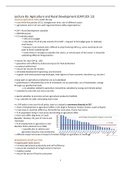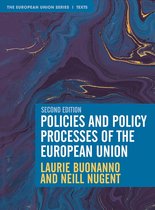College aantekeningen
College aantekeningen van European Integration - tentamen 2 (Notes of lectures of European Integration - exam 2)
- Instelling
- Universiteit Utrecht (UU)
College aantekeningen van European Integration voor tentamen 2, gegeven door Leo Paul. Onderdeel van bachelor Sociale Geografie en Planologie. Bevat erg gedetailleerde aantekeningen met afbeeldingen vanuit het college. Zelf met deze samenvatting een 9,9 gehaald. (Notes of lectures of European Integ...
[Meer zien]





